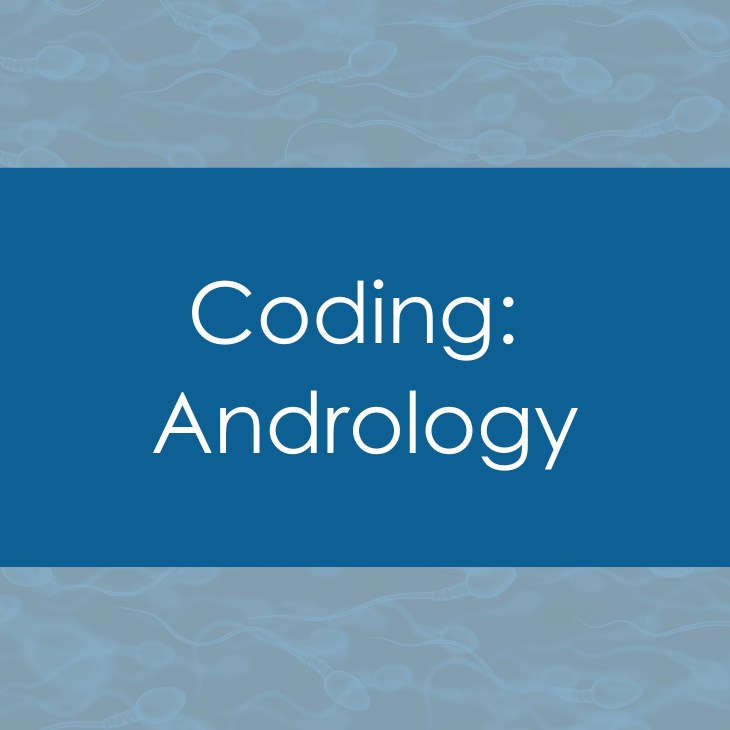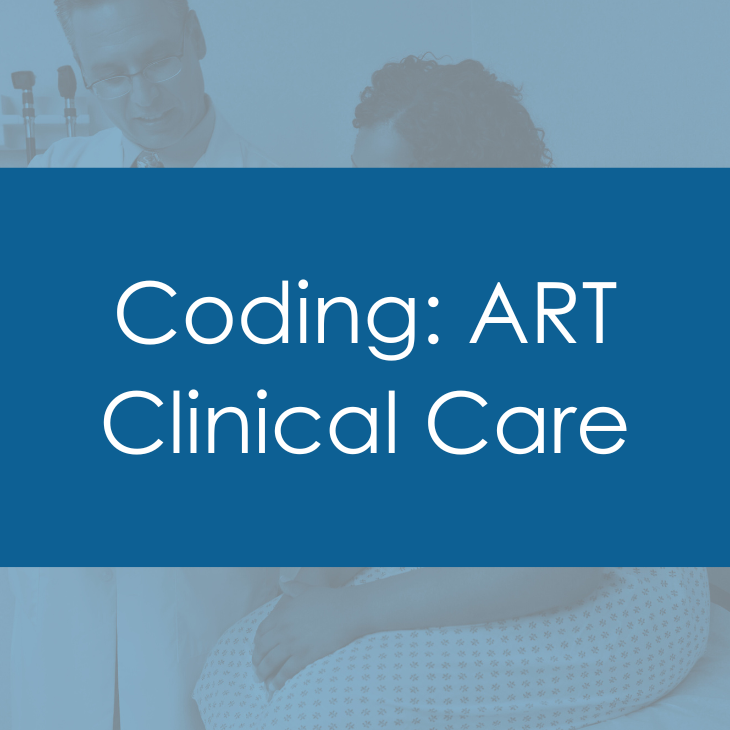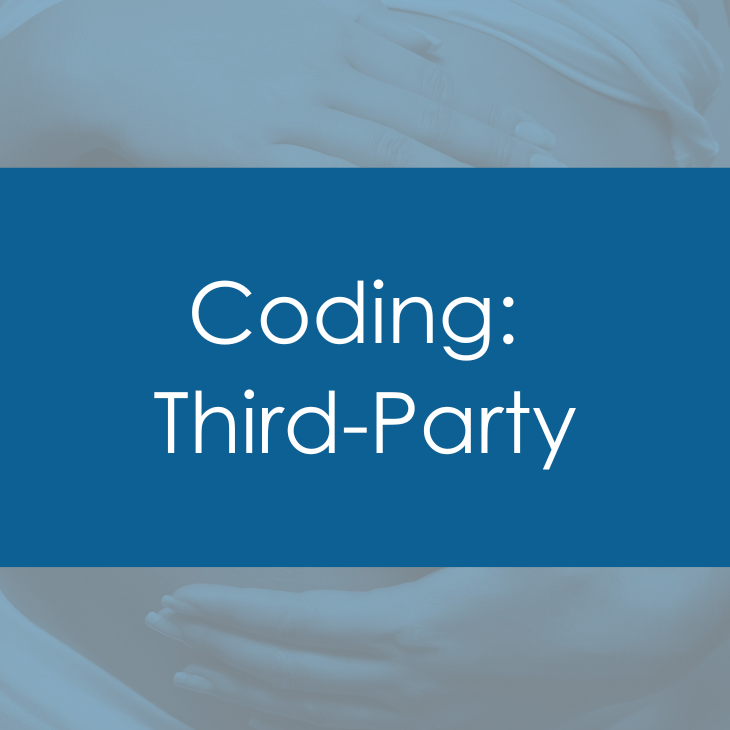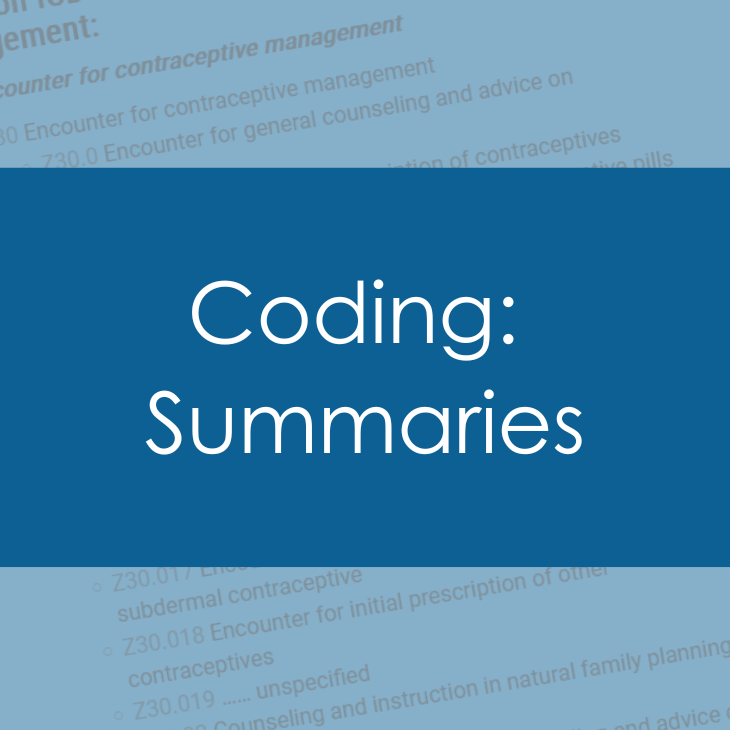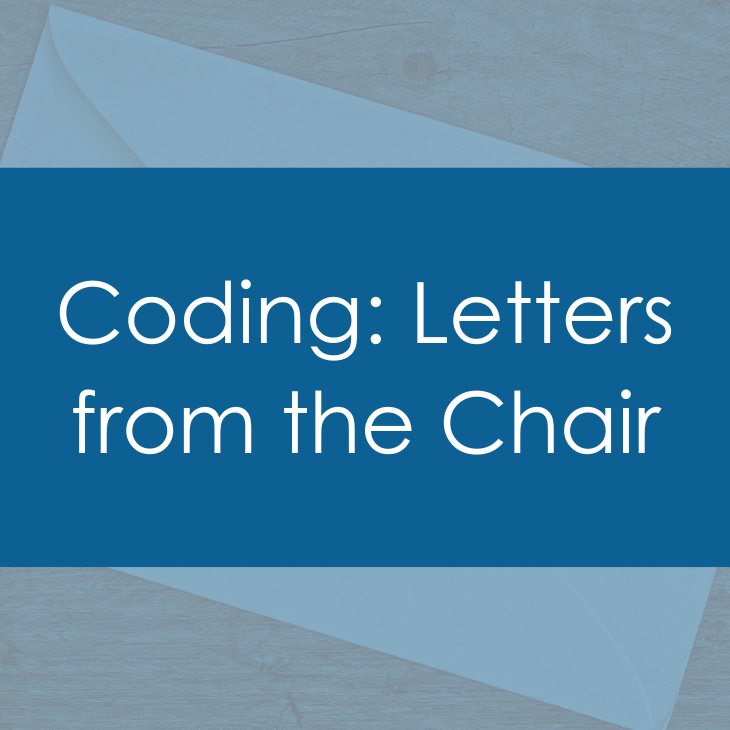Correct coding for laboratory procedures during assisted reproductive technology cycles
BACKGROUND
Physicians should code accurately for the services they provide and the diagnoses that justify those services. Current Procedural Terminology (CPT) 2016 is a listing of procedures performed by physicians and other health care professionals and is maintained by the American Medical Association (AMA). It is generally accepted as the universal reporting system for services performed in the United States as well as many other countries around the world. Each procedure in CPT is reported with a five-digit code that may be further explained by the addition of various two-digit modifiers.HISTORICAL PERSPECTIVE
In vitro fertilization (IVF) involves a multitude of complex laboratory procedures performed over an interval of 1 to 7 days. These procedures involve both the male and female gametes as well as the subsequent embryos that develop. Current Procedural Terminology initially had only one code to describe the laboratory procedures that took place from the time the oocyte was aspirated from the ovary until the embryo was transferred to the uterus or was cryopreserved. A single code quickly became inadequate to describe the many different components of work involved as the variety and complexity of assisted reproductive technology (ART) expanded. As technology has changed, new CPT codes have been added to describe the work performed in the ART setting.This document outlines the proper use of individual and specific codes for each component of the laboratory work involved in an IVF cycle. Bundling of multiple procedures into one or two codes is no longer appropriate, because each of these codes describes distinct and separately identifiable work involved in the laboratory during an IVF cycle.
The laboratory part of the work in an IVF cycle may involve any or all of several procedures currently defined by CPT. In general, procedures involving the oocyte or embryo are coded for the female partner, whereas those directly involving sperm alone are coded for the male partner. Alternatively, all of these procedures may be applied to the female.
The following CPT codes (89250–89398, as well as CPT level III codes 0058T and 0357T) may be applicable in the IVF cycle. Codes are presented in the order they are listed in the CPT book, rather than the sequence in which they are typically performed in an IVF cycle.
INDIVIDUAL ART CODES
89250 Culture of Oocyte(s)/Embryo(s), Less than 4 Days
This code describes only the culture of oocyte(s)/embryo(s) for duration of culture of less than 4 days. It includes the day of insemination but not the procedure involved with the insemination (conventional and/or assisted fertilization [89268, 89280, 89281]). It does not include oocyte identification from follicular fluid (89254) or preparation of embryo for transfer (any method) (89255). It does not include assisted embryo hatching, microtechniques (any method) (89253), cryopreservation; embryo(s) (89258), or oocyte/embryo biopsy (89290, 89291). This code may be reported whether culturing fresh oocyte(s)/embryo(s) or previously cryopreserved oocyte(s)/embryo(s).89251 Culture of Oocyte(s)/Embryo(s), Less than 4 Days; with Coculture of Oocyte(s)/Embryo(s)
This code includes all of the work described by culture of oocyte(s)/embryo(s) (89250) with the additional work of coculturing the embryos with feeder cells (granulosa, endometrial, tubal, etc.). This code would also include the work involved in preparing the culture system. This code is reported instead of 89250 when coculture is utilized. It includes the day of insemination but not the procedure involved with the insemination (conventional and/or assisted fertilization [89268, 89280, 89281]). It does not include oocyte identification from follicular fluid (89254) or preparation of embryo for transfer (any method) (89255). It does not include assisted embryo hatching, microtechniques (any method) (89253), cryopreservation; embryo (89258), or oocyte/embryo biopsy (89290, 89291). This code may be reported whether culturing fresh oocyte(s)/embryo(s) or previously cryopreserved oocyte(s)/embryo(s).89253 Assisted Embryo Hatching, Microtechniques (Any Method)
This code describes any micromanipulation technique used to assist hatching of the embryo from the zona pellucida. It includes using acid Tyrode's solution, laser, or partial zona dissection (PZD) performed for this purpose. It is distinct from codes for culture of oocyte(s)/embryo(s) (89250), culture of oocyte(s)embryo(s); with coculture of embryos (89251), extended culture (89272), and assisted oocyte fertilization; microtechnique (89280, 89281) and should be reported separately. This does not include preparation of embryo for transfer (any method) (89255).89254 Oocyte Identification from Follicular Fluid
This code refers to the work of identifying the oocytes contained in the follicular fluid aspirated at the time of the oocyte retrieval. This does not include any of the work involved in follicle puncture for oocyte retrieval, (any method) (58970) or the subsequent work of culture of oocyte(s)/embryo(s) (89250), the coculture of oocyte(s)/embryo(s) (89251), or extended culture (89272). This code is reported only once per ART cycle regardless of the number of oocytes identified.89255 Preparation of Embryo for Transfer (Any Method)
This code includes the following work: removing the embryo(s) from culture, preparing the embryo(s) for transfer, loading the embryo(s) into an appropriate catheter, transporting the embryo(s) to the transfer room for transfer to the patient, and examination of the catheter after transfer to ensure that no embryo(s) are retained. This code does not include the work of culture of oocyte(s)/embryo(s) (89250), or coculture of oocyte(s)/embryo(s) (89251), extended culture (89272), and is not a part of the work involved in embryo transfer, intrauterine (58974), or gamete, zygote, or embryo intrafallopian transfer (any method) (58976). It also does not include thawing of cryopreserved embryo(s) (89352) or assisted embryo hatching (89253). This code would be utilized for preparation of either a fresh or cryopreserved embryo.89257 SpermIdentification from Aspiration (Other than Seminal Fluid)
This code includes the work involved in identification of sperm from an aspirate, usually from the vas deferens or epididymis. It specifically excludes identification of sperm from seminal fluid; such work is described by other codes, including semen analysis; presence and/or motility of sperm including Huhner test (postcoital) (89300), semen analysis; motility and count (not including Huhner test) (89310), semen analysis; volume, count, motility, and differential (89320), semen analysis; sperm presence and motility of sperm, if performed (89321), or semen analysis; volume, count, motility, and differential using strict morphologic criteria (e.g., Kruger) (89322). This code includes only the work of identifying sperm and does not include the work of assisted oocyte fertilization, microtechnique (any method) (89280, 89281).89258 Cryopreservation; Embryo(s)
This code includes the work of cryopreservation of the embryo(s), regardless of the stage of embryo development. It does not include thawing of the embryo (89352) or subsequent culture of oocyte(s)/embryo(s) (89250), or culture of oocyte(s)/embryo(s); with coculture of embryos (89251), extended culture (89272), or any subsequent charge for storage of the embryos (89342). It also does not include subsequent preparation of embryo for transfer (89255). If embryos are cryopreserved on more than one day during the IVF cycle (i.e., pronuclear stage, cleavage stage, and/or blastocyst), it is appropriate to submit this code for each day that additional work is required.89259 Cryopreservation; Sperm
This code includes the work involved in cryopreservation of sperm. It does not include:- Semen analysis; presence and/or motility of sperm including Huhner test (postcoital) (89300)
- Semen analysis; motility and count (89310)
- Semen analysis; volume, count, motility, and differential (89320), semen analysis; sperm presence and motility of sperm, if performed (89321), or semen analysis; volume, count, motility, and differential using strict morphologic criteria (e.g., Kruger) (89322)
- Sperm identification from aspiration (other than seminal fluid) (89257)
- Sperm identification from testis tissue, fresh or cryopreserved (89264)
- Sperm isolation; simple prep (e.g., sperm wash and swimup) for insemination or diagnosis with semen analysis (89260)
- Sperm isolation; complex prep (e.g., Percoll gradient, albumin gradient) for insemination or diagnosis with semen analysis (89261); or thawing of sperm or testicular tissue (89353, 89354).
0058T Cryopreservation; Reproductive Tissue, Ovarian
0357T Cryopreservation; Reproductive Tissue, Immature Oocyte(s)
These are both Category III codes. This category of CPT codes allows for the collection of specific data used to assess the clinical efficacy, utilization, and outcomes of the described services. Category III codes are tracking codes used for new and emerging technology. These two procedures are both considered experimental by the ASRM Practice Committee (1, 2). A Category III code may be converted to a Category I code if it becomes evident that the procedure is in widespread use and is no longer deemed experimental. These codes do not include thawing (89354, 89356) or annual storage (89344, 89346).89260 Sperm Isolation; Simple Prep (e.g., Sperm Wash and Swim-Up) for Insemination or Diagnosis with Semen Analysis
This code includes the work involved in sperm wash and swim-up for either insemination or diagnosis. It includes semen analysis (89300, 89310, 89320, 89321); therefore, semen analysis is not reported separately. This code is used for any simple prep.89261 Sperm Isolation; Complex Prep (e.g., Percoll Gradient, Albumin Gradient) for Insemination or Diagnosis with Semen Analysis
This code includes the work involved in sperm isolation from a complex prep for either insemination or diagnosis. It also includes semen analysis (89300, 89310, 89320, 89321); therefore, semen analysis is not reported. The density gradients cited are only examples. This code applies to any complex prep.89264 Sperm Identification from Testis Tissue, Fresh or Cryopreserved
This code includes sperm identification and isolation from fresh or frozen testis tissue. This code is distinct from the code for sperm identification from aspiration (other than seminal fluid) (89257). It does not include work done with sperm after identification and isolation. Assisted oocyte fertilization, microtechnique (89280, 89281) or cryopreservation; sperm (89259) should be coded separately. For biopsy of testis, see biopsy of testis, needle (separate procedure) or biopsy of testis, incisional (separate procedure) (54500, 54505).89268 Insemination of Oocytes
This code includes the work involved in conventional in vitro insemination of oocytes. It does not include culture of oocyte(s)/embryo(s) (89250, 89251, 89272), sperm isolation (89260, 89261, 89264, 89257); assisted embryo hatching (89253), or thawing of cryopreserved sperm/semen or testicular tissue (89353, 89354). It also is not included in assisted oocyte fertilization (89280, 89281) and both should be reported if both are performed on an infertile couple undergoing ART.89272 Extended Culture of Oocyte(s)/Embryo(s), 4–7 Days
This code applies to the continuation of oocyte/embryo culture in excess of 3 days and is reported in addition to the culture of oocyte(s)/embryo(s), less than 4 days (89250, 89251). This does not include oocyte identification from follicular fluid (89254), preparation of the embryo for transfer (89255), insemination/assisted oocyte fertilization (89280, 89281, 89268), assisted embryo hatching (89253), cryopreservation of embryo (89258), or biopsy of oocyte/embryo (89290, 89291).89280 Assisted Oocyte Fertilization, Microtechnique; Less than or Equal to 10 Oocytes; Greater than 10 Oocytes (89281)
This code is restricted to assisted oocyte fertilization such as intracytoplasmic sperm injection (ICSI). It is not included in the code for culture of oocyte(s)/embryo(s) (89250, 89251, 89272) and should be reported in addition to these codes when both procedures are performed. This does not include conventional insemination of oocyte(s) and both may be reported on the same patient if both procedures are performed. These codes do not include the sperm isolation (89260, 89261, 89264, 89257) nor do they include assisted hatching (89253). Either 89280 or 89281 would be reported based on the number of oocytes undergoing assisted fertilization.89290 Biopsy, Oocyte Polar Body or Embryo Blastomere, Microtechnique (for Preimplantation Genetic Diagnosis); Less than or Equal to 5 Embryos
89291 Greater than 5 Embryos
These two codes include only the work involved in the actual polar body biopsy, trophectoderm biopsy, or blastomere biopsy. This does not include culture of oocyte(s)/embryo(s) (89250, 89251, 89272), oocyte identification from follicular fluid (89254), preparation of the embryo for transfer (89255), insemination/assisted oocyte fertilization (89268, 89280, 89281), assisted embryo hatching (89253), or cryopreservation of embryo (89258). These two codes also do not include any of the testing that might be done on the cell(s) removed from the oocyte or embryo.89335 Cryopreservation, Reproductive Tissue, Testicular
This code includes the work involved in cryopreservation of reproductive tissue from the testicle. It does not include:- Semen analysis; presence and/or motility of sperm including Huhner test (postcoital) (89300)
- Semen analysis; motility and count (not including Huhner test) (89310)
- Semen analysis; volume, count, motility, and differential (89320), semen analysis; sperm presence and motility of sperm, if performed (89321), or semen analysis; volume, count, motility, and differential using strict morphologic criteria (e.g., Kruger) (89322)
- Sperm identification from aspiration (other than seminal fluid) (89257)
- Sperm identification from testis tissue, fresh or cryopreserved (89264)
- Sperm isolation; simple prep (e.g., sperm wash and swimup) for insemination or diagnosis with semen analysis (89260); sperm isolation; complex prep (e.g., Percoll gradient, albumin gradient) for insemination or diagnosis with semen analysis (89261).
(89344) or thawing (89354).
89337 Cryopreservation, Mature Oocyte(s)
This code includes the work involved in cryopreservation of mature oocytes. It does not include the annual storage (89346) or thawing (89356). Viable oocytes after thawing may then undergo some of the same procedures as oocytes derived in fresh ART cycles such as culture, fertilization, hatching, embryo biopsy, transfer and/or cryopreservation. The cryopreservation of immature oocytes is still considered experimental by ASRM and would be reported with a Category III code (0357T).89342 Storage, (Per Year) for Embryo(s)
89343 Storage, (Per Year) for Sperm/Semen
89344 Storage, (Per Year) for Reproductive Tissue, Testicular/Ovarian
89346 Storage, (Per Year) for Oocyte(s)
These codes are for storage of each identified tissue type and provide for the cost of frozen storage for a finite period of time. This standardizes the storage charges to a per-year basis and may be prorated for durations of less than one year. These codes do not include the cryopreservation of the item or thawing of the item. Storage fees specify a duration of time only and are independent of the amount of material stored or the number of times accessed.89352 Thawing of Cryopreserved; Embryo(s)
89353 Thawing of Cryopreserved; Sperm/Semen, Each Aliquot
89354 Thawing of Cryopreserved; Reproductive Tissue, Testicular/Ovarian
89356 Thawing of Cryopreserved; Oocyte(s), Each Aliquot
These codes are for thawing of each identified item. These codes do not include the cryopreservation of the item or storage. The thawing of sperm/semen and oocyte(s) are per storage unit (e.g., aliquot, straw, or cane). If thawed embryo(s) or oocyte(s) are cultured beyond the date of the thaw, then it would be appropriate to code for culture of oocyte(s)/embryo(s) (89250, 89251, 89272).SUMMARY
The CPT codes currently available for practitioners utilizing ART procedures have been greatly expanded to more accurately describe the work that is being performed. As changes take place in this rapidly advancing area, the Society will continue to lead the effort to add additional codes to describe the work related to ART.Acknowledgments: This report was developed by the Coding Committee of the American Society for Reproductive Medicine and as a service to its members and other practicing clinicians. The Coding Committee and the Board of Directors of the American Society for Reproductive Medicine have approved this report.
The following members of the ASRM Coding Committee participated in the development of this document. All Committee members disclosed commercial and financial relationships with manufacturers or distributors of goods or services used to treat patients. Members of the Committee who were found to have conflicts of interest based on the relationships disclosed did not participate in the discussion or development of this document.
Beth Rackow, M.D.; Victor Brugh, M.D.; Silvina Bocca, M.D., Ph.D.; Carli Chapman, M.S.; Miguel Damien, M.D.; Bryan Hecht, M.D.; George Hill, M.D.; Andrew La Barbera, Ph.D.; Elizabeth Puscheck, M.D.; John T. Queenan, M.D.; Richard Reindollar, M.D.; Steven Spandorfer, M.D.
REFERENCES
- Practice Committees of the American Society for Reproductive Medicine and the Society for Assisted Reproductive Technology. In vitro maturation: a committee opinion. Fertil Steril 2013;99:663–6.
- Practice Committee of American Society for Reproductive Medicine. Ovarian tissue cryopreservation: a committee opinion. Fertil Steril 2014;101:1237–43.
Coding Q&A
View more Coding in this category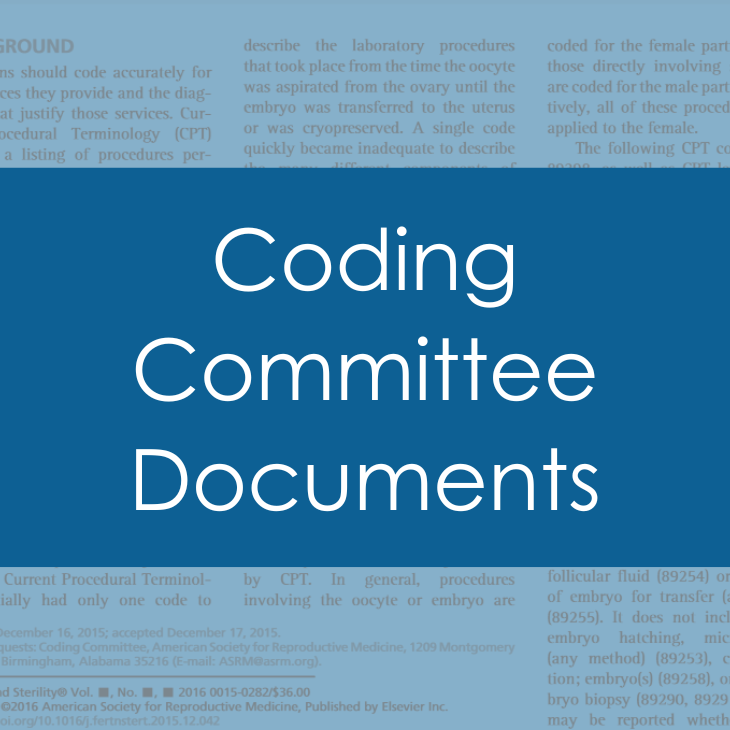
Mental Health Coding for Donor Recipients
Appropriate coding is an issue of ethical practice and provides the best opportunity for insurance coverage/reimbursement for fertility patients.Topic Resources
View more on the topic of assisted reproductive technologies

